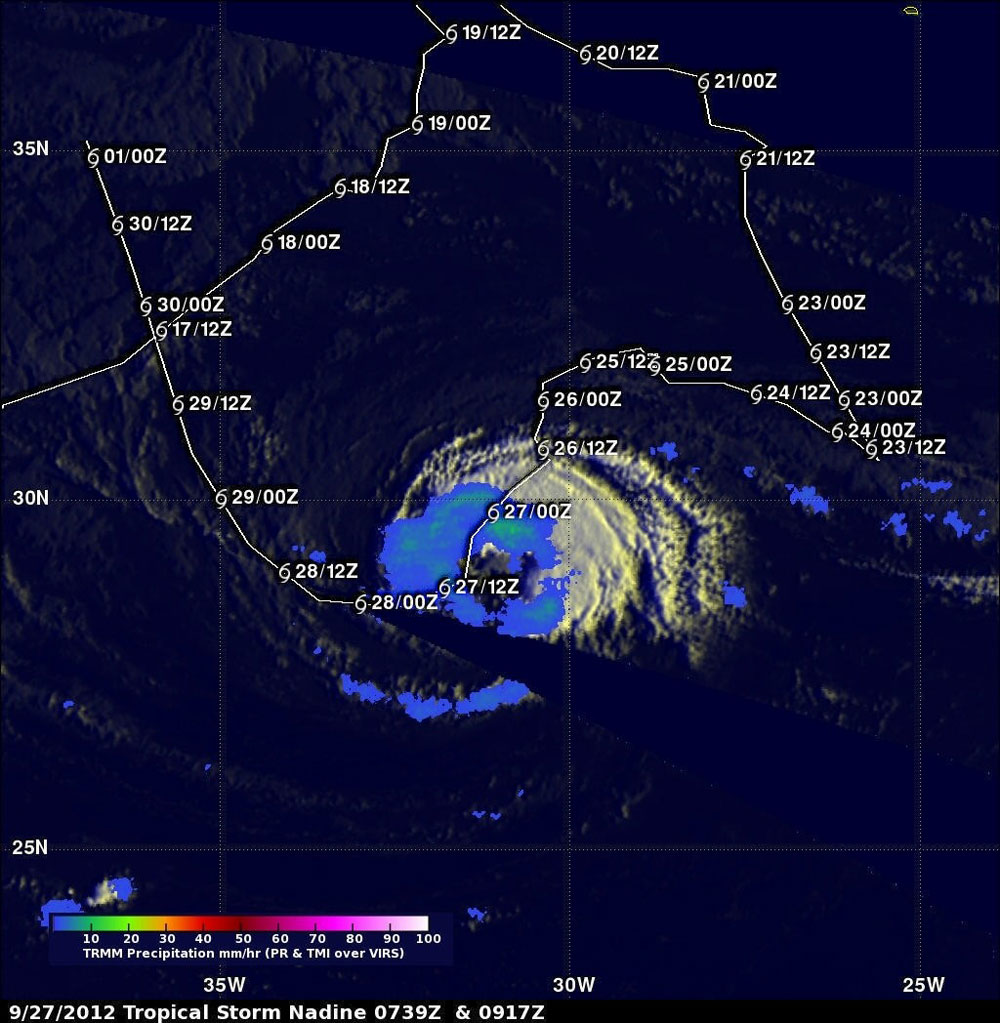Nadine Becomes A Hurricane … Again


For the second time during its 18-day tenure, Tropical Storm Nadine has strengthened into Hurricane Nadine.
The storm currently has maximum sustained winds of 75 mph (120 kph) — just above the threshold for hurricane strength — making it a Category 1 hurricane. The storm also has a discernable central eye in satellite imagery, forecasters from the U.S. National Hurricane Center noted, a hallmark sign of a hurricane.
Nadine has been wandering around an area of the ocean near the Azores in the last couple weeks and currently lies 730 miles (1,175 kilometers) southwest of the islands.
Nadine first became a named storm on Sept. 11. (Storms in the Atlantic Ocean basin receive a name when they reach tropical storm strength). On Sept. 14, Nadine became a hurricane for the first time (making it the eighth hurricane of the 2012 Atlantic season).
On Sept. 21, the storm had diminished enough as it moved over cooler ocean waters that forecasters downgraded it to a remnant low pressure system (meaning it lacked the organization and strength to qualify as a tropical cyclone). But Nadine didn't stay down for long: As of the morning of the 23rd, it was a tropical storm again.
Nadine is moving toward the northwest right now and its strength is projected to remain about the same over the weekend, according to the latest NHC update, though by Monday it is expected to have weakened back into a tropical storm.
No other named storms have formed since Nadine first sprang into action at the traditional peak of the hurricane season. Forecasters amended their predictions for the season in August, projecting that the season would likely see 12 to 17 named storms, of which five to eight were expected to become hurricanes. So far, there have been 14 named storms, of which eight became hurricanes.
Get the world’s most fascinating discoveries delivered straight to your inbox.
At this point in the year, the hurricane season is now typically on the wane, but storms have been known to form late in the season, and even after the season's official Nov. 30 end date.
This story was provided by OurAmazingPlanet, a sister site to LiveScience.

Andrea Thompson is an associate editor at Scientific American, where she covers sustainability, energy and the environment. Prior to that, she was a senior writer covering climate science at Climate Central and a reporter and editor at Live Science, where she primarily covered Earth science and the environment. She holds a graduate degree in science health and environmental reporting from New York University, as well as a bachelor of science and and masters of science in atmospheric chemistry from the Georgia Institute of Technology.


